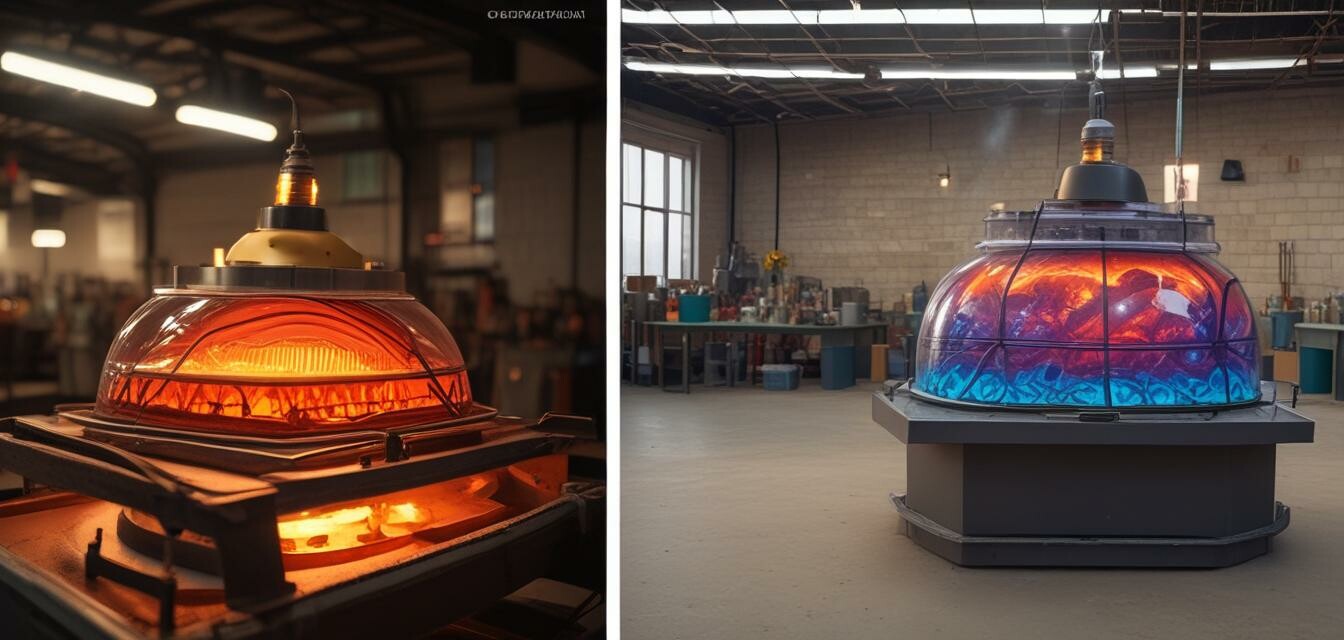
Comparison of Electric vs. Gas Kilns for Glass Art
Key Takeaways
- Electric kilns offer easier temperature control and are more user-friendly.
- Gas kilns provide a unique aesthetic and can be more cost-effective for larger operations.
- Your choice may depend on your project type, workspace, and personal preferences.
When it comes to creating beautiful glass art, choosing the right kiln is critical to your success and enjoyment in your craft. This article will compare electric and gas kilns, delving into their benefits and drawbacks to help you make an informed decision that suits your creative needs.
Overview of kilns and their importance in glass making
Kilns are essential tools in glass making as they provide the heat required to fuse, slump, or cast glass. Understanding the different types of kilns can significantly impact the quality of your work and your overall artistic experience.
What to consider when choosing a kiln
- Type of projects you plan to create.
- Space and electrical requirements.
- Cost and maintenance considerations.
Electric kilns: benefits and drawbacks
Pros
- Precise temperature control for detailed glasswork.
- Cleaner operation with no emissions.
- Often more straightforward to use for beginners.
- Less maintenance required compared to gas options.
Cons
- Higher upfront costs for initial setup.
- May require specific electrical infrastructure.
- Limited to the power availability in your location.
Types of electric kilns
Electric kilns come in various sizes and styles, including:
- Tabletop kilns for smaller projects.
- Large kilns for production work.
- Programmable kilns for advanced glass artists.
Gas kilns: benefits and drawbacks
Pros
- Larger capacity for bigger projects.
- Ability to achieve higher temperatures quickly.
- Can be more economical for extensive usage.
- Offers unique firing characteristics, leading to special effects.
Cons
- More complex setup and operational requirements.
- Higher maintenance and monitoring needed.
- Emissions can create ventilation concerns.
How gas kilns operate
Gas kilns rely on natural gas or propane to generate heat, which can lead to different patterns and textures in the glass piece, often resulting in unique finishes. Understanding the fuel required and the necessary safety precautions is crucial before selecting a gas kiln.
Comparison table: Electric vs. Gas kilns
| Feature | Electric Kilns | Gas Kilns |
|---|---|---|
| Temperature Control | Precise | Variable |
| Efficiency | Lower operating costs | Can be economical in large operations |
| Setup Complexity | Simple | Complex with safety concerns |
| Maintenance | Low | High |
| Artistic Qualities | Consistent results | Unique effects and finishes |
Conclusion
The choice between electric and gas kilns significantly affects your glass art projects. Each kiln type offers unique advantages and challenges. If you're a beginner or focused on precise control, an electric kiln may be the best fit for you. Alternatively, if you're looking to produce larger pieces economically and desire unique aesthetic qualities, a gas kiln could be the ideal choice.
Further reading
If you're still unsure, consider exploring more about kilns through our detailed resources:

